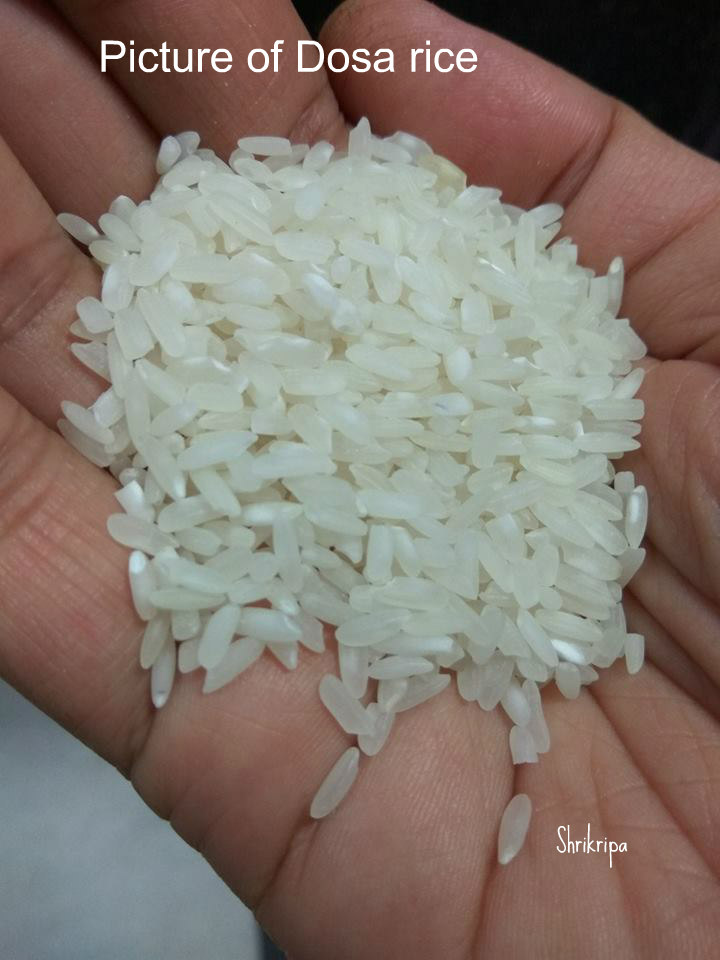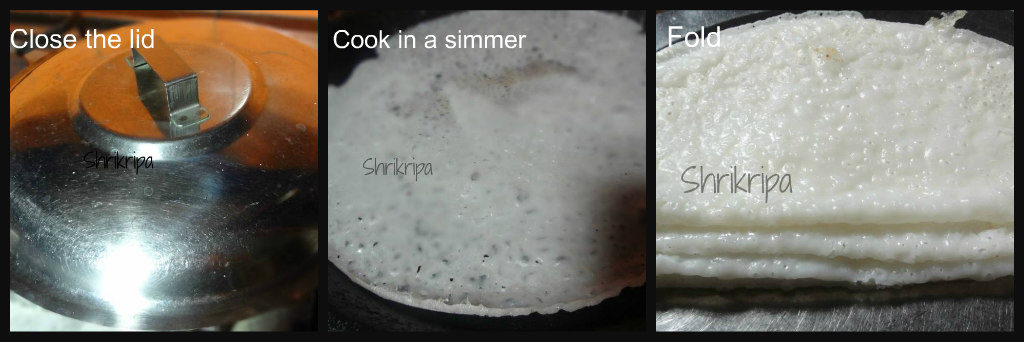Hi all! Today I’m posting a south Karnataka special- Neer Dosa! Its literal translation to English is watery Dosa and we call this as “Thellavu”. It is soft lace like and many people enjoy this Dosa. Friends always want to have this Dosa when they visit our home and it is a joy to prepare and eat. Everyone keeps asking for the recipe and I thought I would post it. So, here’s how you make this simple, soft and delicious Dosa. This Dosa stays fresh for hours and very good option for tiffin boxes or gatherings. One can prepare in advance and keep it in a hot box.

Ingredients needed:
Dosa rice -2 cups
Salt
Iron griddle /tawa.
Method:
- Wash and soak Dosa rice at night or 2 to 3-hour soaking is needed.

- In the morning grind this soaked rice into fine paste with water (I use soaked water while grinding, it gives nice aroma for the Dosa) and salt as per requirement.
- Make batter into pourable consistency like this and check for the salt.

- Now keep Iron griddle for heat.
- When it is ready, apply oil like this.
- Pour one serving spoon of batter like how we make Rawa Dosa, you can see it in the picture above.
- Now close the lid by keeping the gas on full flame.

- After two minutes, remove the lid and keep the gas in simmer the edges of the Dosa rise a little(See in 2nd picture “cook in a simmer”)
- Now flip this Dosa on the plate, leave for 2 minutes, then fold (upper shiny part will stay upwards)
- Now keep repeating this with the remaining batter and stack one over the other or take one big plate and stalk one opposite another alternately.
- This type of folding will help to keep Dosa without sticking to one another.

- Serve these Dosa with coconut and grated jaggery mixture or coconut chutney. People even enjoy Neer Dosa with Egg curry or Chicken curry as well.
Note:
- Use soaked water while grinding.
- If you are using any other variety of rice,please add half cup of fresh coconut to give softness to Dosa.
































